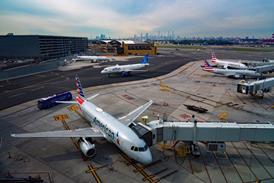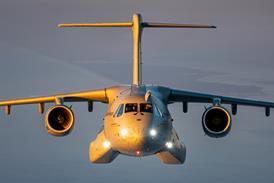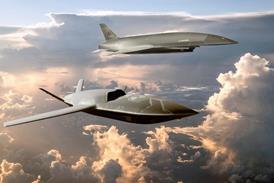Avianca and Copa Colombia plan to consider a codeshare and other forms of cooperation as the two carriers prepare to both join Star Alliance
Avianca and Copa Colombia are currently the largest and third largest players, respectively, in the fiercely competitive Colombian domestic market. While they compete head to head they both also face increasing competition from low-cost carrier Aires, which is now in the process of being acquired by Avianca and Copa rival LAN.
Copa Holdings chief executive Pedro Heilbron says an Avianca-Copa Colombia codeshare is possible and could be implemented before the two carriers formally join Star in 2012. "That could happen," Heilbron says. "Star facilities that."
"The main thing is we will have our frequent flier programmes linked up. When you are in an alliance like Star, you have to link up your frequent flier programmes and that's even more powerful than a codeshare," he explains. "Just by linking up our frequent flier programmes all our customers are going to win and we'll be a stronger competitor for LAN or anybody else."
Heilbron dismisses any notion that two airlines from one market cannot be in the same alliance, pointing out how Star members United Airlines and US Airways both now compete and cooperate. "If alliances were to exclude competitors there probably would be no alliances," he says. "It is not about diminishing competition but making everyone better."
Avianca-TACA chief executive Fabio Villegas agrees that Star should make both Avianca and Copa Colombia stronger airlines. "We will have to have some connectivity between our networks and we will have to share our frequent flier programmes and other benefits," Villegas says. "We'll also be happy to explore other opportunities for partnership with Copa in the near future."
Based on Colombian CAA data through the first eight months of this year Avianca has a 55% share of the domestic market followed by Aires at 21% and Copa Colombia at 15%. While Aires over the last year has overtaken Copa as the second largest domestic carrier in Colombia, Heilbron is quick to point out that in the more profitable international market Copa Colombia is still the second largest carrier after Avianca and overall when combining both the domestic and international markets Copa is still ahead of Aires.
Domestic competition has been fierce since early last year, when Aires began operating on domestic trunk routes for the first time and gave the country its first taste of low fares. The Aires expansion drove a 22% increase in total domestic traffic last year and the market through the first eight months of this year grew another 36%.
Villegas says Avianca has been able to keep its aircraft full, even as it has grown domestic capacity by 20% this year, but fares have fallen 30% on average. "We are in a very strong competitive framework but I have to say the market has proven to be very elastic. What we see is very high load factors. We are flying with load factors of 85% in the domestic market," he says.
"With the reduction in price the market has grown in an important way. A lot of passengers that used to take land transportation are now flying. That is an important segment of the market for airlines and it is there," Villegas adds.
But Villegas warns that fares and yields cannot fall further if airlines are to recover their operational costs. "I think fares have fallen so much they have come to a limit," he says.
Source: Air Transport Intelligence news























